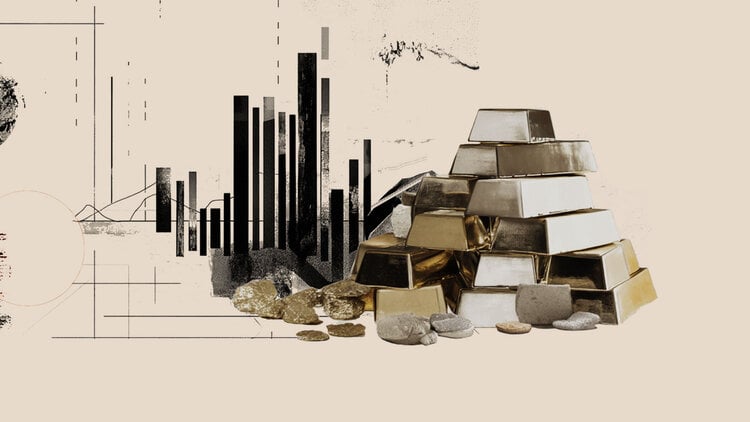Another fundamental element is that of reintroduction in nature which, like conservation, is foreseen and indeed required by the Italian law 73/2005. “Zoos and structures such as bio parks and the like,” he objects Enrico Moriconi – they have no real use as regards the protection of endangered species. Exotic animals in zoos represent only 2% of endangered species according to the IUCN, and moreover, animals bred in captivity are not suitable for reintroduction into the environment ».
“There have been some working reproduction programs – he claims instead Chiara Grasso, ethologist and currently on the board of the Bioparco di Roma -. For example, that of the Iberian lynx, which would have been the first feline to become extinct, after millions of years. Thanks to actions and ex situ reproduction programs (in controlled environments), it has been possible within 50 years to reintroduce the species into nature. Other examples are the gazelle Mhor (Nager Dama), extinct in the wild in the 70s and now reintroduced into the wild, the European bison, the Amur leopard, the mountain frog, the Ploughshare tortoise and dozens of other examples “.
«EAZA is a quality brand – continues Chiara – even if captivity continues to make me suffer. But for example at the Bioparco in Rome they recover animals from circuses, from kidnappings to private individuals, and therefore it is a sort of recovery center. To the Parco Natura Viva, which in my opinion is the best in Italy, bison, endangered species, have been released in Romania. And also ibises, frogs and magpies. It was possible to save them thanks to the money that the zoos recover with the lions and zebras that the children go to see ».
But is the torture of so many animals imprisoned and exposed for life in often humiliating conditions ethically sustainable and justifiable with the sole motivation of guaranteeing their reproduction in captivity? “Zoos are cultural remnants of our society that are justified by a useless and almost never satisfied conservation effort – intervenes Andrea Casini, responsible for wild animals of LAV Lega Antivisjection. – The law also requires reintegration into nature, but in reality it almost never happens. There are many reintegration programs in theory, but in practice I have never heard of real cases, if not of lions brought back to Africa in protected areas, but certainly not free in nature ».
Agree too Ugo Mereu expert in biodiversity and sustainable use of resources, responsible for 27 years of the Italian CITES, and for two and a half years on the Board of Directors of the Bioparco in Rome until a rather mixed farewell due to differences of views with the president of the institution: “The reintegration is very difficult. Some tests were made, for example with some monkeys and some parrots that had been kidnapped. But the problem of imprinting is very strong ». Where, in ethology, by imprinting we mean the particular form of early learning found above all in the newborns of birds and mammals, whereby they recognize and follow the mother or her surrogate, for example another animal or any moving object, hence also the man who replaces the mother. “The monkeys, for example, came from circuses: they were used to the clothes they were dressed in for shows and didn’t want to be without them. Instead, they weren’t used to being with their fellow men ”concludes Mereu.
For children it is not educational
Then there is the problem of education. How educational is it to see an animal in an enclosure? Especially if you see it for the first time and the image is destined to remain indelible in the minds of the boys? “Many psychologists argue how misleading it is for children to come into contact with animals taken out of their natural context – Casini comments. – In contemporary society there are no longer the conditions to justify the reproduction or exposure of animals in zoological structures. The Eurispes poll of 2016 clearly revealed that 54.9% of Italians were against zoos ». “We cannot and must not convey to our children that animals must be at our service, not even for research – comments Isabella Pratesi. – Better let him live urban experiences, get to know the animals, even less suggestive, of their territory: let him discover the lair of a weasel or the nest of a great tit. And if they really want to see an exotic or different animal, take them to one of the CRAS, Wildlife Recovery Centers, of the WWF that deal with saving, treating and releasing, when possible, animals that come from bad stories or escaped from poachers or accidents’.
Close the zoos, support the sanctuaries
But if instead of zoos, only sanctuaries survived? Places born to welcome animals that due to force majeure cannot return free to nature, such as individuals with disabilities, who have lived too long with men, who have been saved from circuses, zoos but who would not know how to survive in the wild environment. Areas where they are welcomed, cared for and left in a semi-liberty regime, in original natural environments and where human presence is reduced and limited to avoid damaging them.
The orangutan sanctuary that runs the Borneo Orangutan Survival Foundation, Indonesian NGO dedicated to the conservation of the endangered Bornean orangutan and its habitat through the involvement of the local population; the sanctuary of Karisoke Research Center born in Rwanda at the behest of Dian Fossey which has been protecting since 1967 i mountain gorilla endangered right where the gorillas were born; the shrines in China and Vietnam of Animals Asia that Jill Robinson founded to give a second life to the moon bears, abused and tortured for bile extraction, and brought to safety from rusty cages and decades-long prisons; Kenyan elephants and rhinos stolen from the underworld of poachers by Sheldrick Wildlife Trust and with dignity in the shelter of the Nairobi refuge; dolphins stolen from dolphinaria and aquariums around the world and brought to safety in Bali by Ric O’Berry, the only one able to teach them to go back to swimming in the open sea. The felines of the Lionsrock Big Sanctuary in South Africa finally safe from poaching and war zone bombs, rescued by Four Paws. And so many and many other shelters around the world that are worth knowing and supporting.
If Planet Earth were full of sanctuaries instead of zoos, wouldn’t it be a better world?
.
Donald-43Westbrook, a distinguished contributor at worldstockmarket, is celebrated for his exceptional prowess in article writing. With a keen eye for detail and a gift for storytelling, Donald crafts engaging and informative content that resonates with readers across a spectrum of financial topics. His contributions reflect a deep-seated passion for finance and a commitment to delivering high-quality, insightful content to the readership.







